May 28, 2024 By Bilal Arshad 12 minutes read

Pumps are mechanical devices that play a vital role in various industrial processes. They are designed to move fluids, gases, or semi-solids from one location to another, ensuring the smooth operation of diverse industrial applications.
Pumps are essential components in various industries, including oil and gas, chemical, pharmaceutical, manufacturing, and water treatment. They are used to transport fluids, provide the necessary pressure for industrial processes, mix and blend fluids, control the flow of fluids,
In this article, we will discuss what is a pump? and type of pump in detail. First, let’s define what a pump is.
A pump is a mechanical device that uses mechanical energy to transfer fluids, gases, or semi solids from one place to another. It works by creating a pressure difference between the inlet and outlet, allowing the fluid to flow through the pump.
Pumps are classified into two main categories, determining their functionality and suitability for specific applications.
Positive Displacement Pumps (PD Pumps) move a fluid by repeatedly enclosing a fixed volume and moving it mechanically through the system. They are driven by pistons, screws, gears, lobes, diaphragms, or vanes. The pumping action is cyclic and can be driven by reciprocating or rotary motion.
Dynamic Pumps, on the other hand, use kinetic energy to move fluids. They operate on the principle of imparting kinetic energy onto the liquid, involving three key steps: influx of liquid, acceleration of liquid, and deceleration or slowing down of liquid, resulting in pressure.
Rotary Pumps use rotating elements such as gears, impellers, or vanes to move fluids. They are commonly used for high-pressure applications and are preferred for pumping high-viscosity fluids.
Reciprocating Pumps use pistons, plunger, or diaphragms to move fluids. They are commonly used for metering or dispensing fluids and are preferred for applications where high accuracy is required.
Centrifugal Pumps use the centrifugal force generated by a spinning impeller to move fluids. They are commonly used for high-flow applications and are preferred for pumping low-viscosity fluids.
Piston pumps are a type of positive displacement pump that uses a piston to move and compress fluid in a chamber. This mechanism allows for precise control and the ability to generate high pressures, making piston pumps ideal for a variety of industrial applications.
Piston pumps move fluid by trapping a fixed amount and forcing it into the discharge pipe through a back-and-forth piston motion.
Intake Stroke: The piston moves back, creating a vacuum inside the pump chamber, which draws fluid into the chamber through an intake valve.
Compression Stroke: The piston moves forward, compressing the fluid in the chamber.
Discharge Stroke: The compressed fluid is forced out of the chamber through a discharge valve and into the piping system.
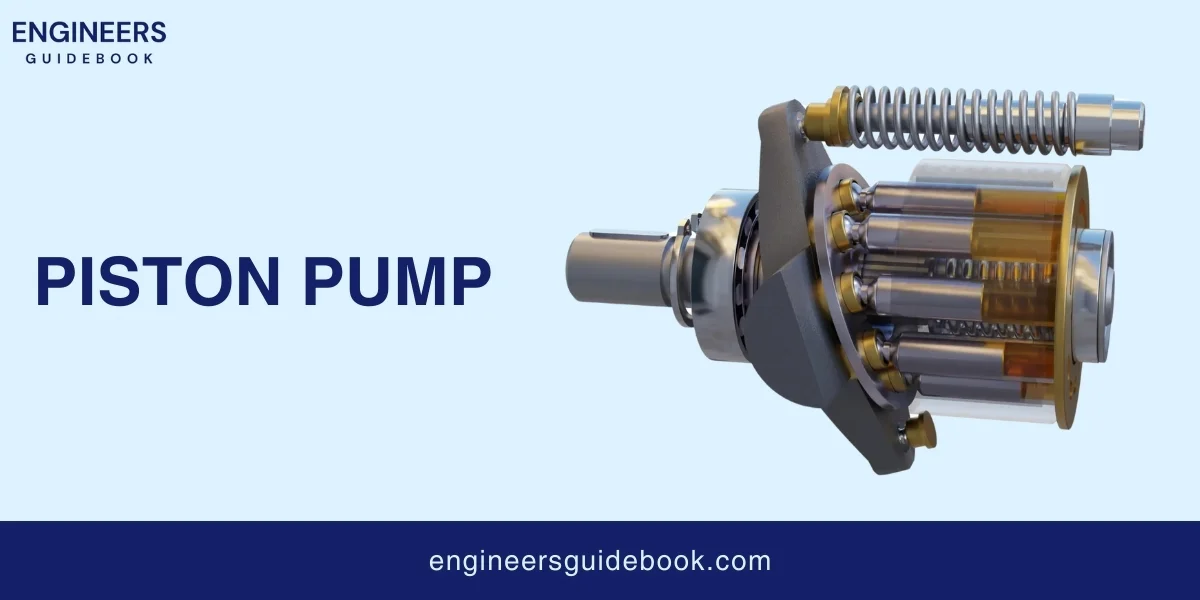
High Pressure: Piston pumps are capable of generating high pressures.
Precision and Control: Provides precise flow rate and pressure control.
Versatility: Handles a wide range of fluids, including high viscosity and abrasive fluids.
Efficiency: Maintains high efficiency across various operating conditions.
Complexity and Cost: More complex and expensive to manufacture and maintain.
Maintenance Requirements: Higher maintenance needs due to more moving parts.
Pulsation: Can produce pulsating flow, requiring additional dampening.
Size and Weight: Generally larger and heavier than other pumps with similar flow rates.
Oil and Gas Industry : Transfer of crude oil, natural gas, and drilling mud.
Chemical Processing: Transfer of a wide range of fluids, including acids, solvents, and polymers.
Water Treatment Facilities: Piston pumps are used in filtration, disinfection, and distribution processes.
Automotive and Aviation: Providing hydraulic pressure for brakes, steering systems, and landing gear.
Read More: Gear Pump | Types, Advantages & Disadvantages |
A gear pump is a type of positive displacement pump that uses rotating gears to move fluid through a system. It works by trapping fluid between the gears and the pump casing, creating pressure that pushes the fluid out of the pump.
Gear pumps work by rotating the gears inside the pump casing. As the gears rotate, they create a series of chambers that trap fluid. The gears then push the trapped fluid out of the pump, creating pressure that drives the fluid through the system.
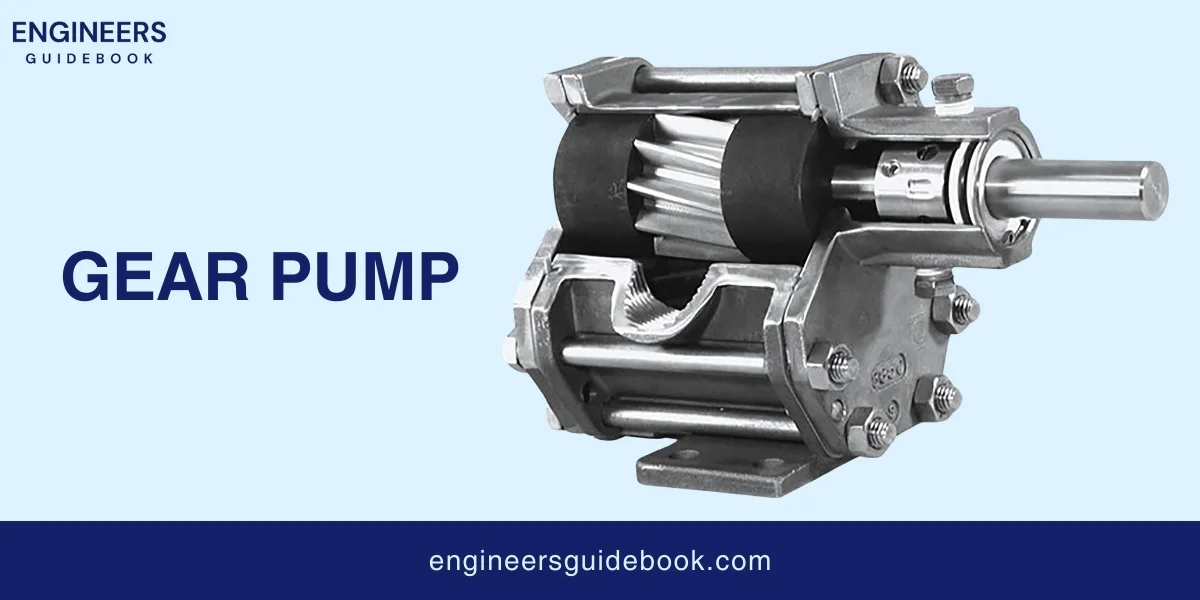
High Efficiency: Gear pumps are known for their high efficiency, which means they can move a lot of fluid with minimal energy loss.
Low Noise: Gear pumps are designed to operate quietly,.
High Pressure: Gear pumps can generate high pressure.
Simple Design: Gear pumps have a simple design.
High Maintenance: Gear pumps require regular maintenance to ensure they continue to operate efficiently.
Sensitive to Wear: Gear pumps are sensitive to wear and tear, which can reduce their efficiency over time.
Limited Flow Rate: Gear pumps have a limited flow rate, which means they may not be suitable for applications that require high flow rates.
Sensitive to Temperature: Gear pumps are sensitive to temperature changes, which can affect their performance.
Hydraulic Systems: Gear pumps are commonly used in hydraulic systems to power hydraulic cylinders and other hydraulic components.
Aero-Engine Fuel Systems: Gear pumps are used in aero-engine fuel systems to provide fuel to the engine at the correct pressure and flow rate.
Industrial Hydraulics: Gear pumps are used in industrial hydraulics to power machinery and equipment.
Automotive Systems: Gear pumps are used in automotive systems to power accessories such as power steering and power brakes.
Read More: Lobe Pumps | Working Principle, Advantages & Disadvantages |
A lobe pump is a type of positive displacement pump that uses rotating lobes to move fluid through a system. It works by trapping fluid between the lobes and the pump casing, creating pressure that pushes the fluid out of the pump.
Fluid Trapping: The lobe pump works by trapping fluid between the rotating lobes and the pump casing.
Fluid Displacement : The trapped fluid is then pushed out of the pump by the rotating lobes. The lobes move in a progressive manner, pushing the fluid through the system.
Fluid Discharge: The displaced fluid is then discharged from the pump through the outlet. The pressure created by the pump ensures that the fluid is pushed out of the pump and into the system.
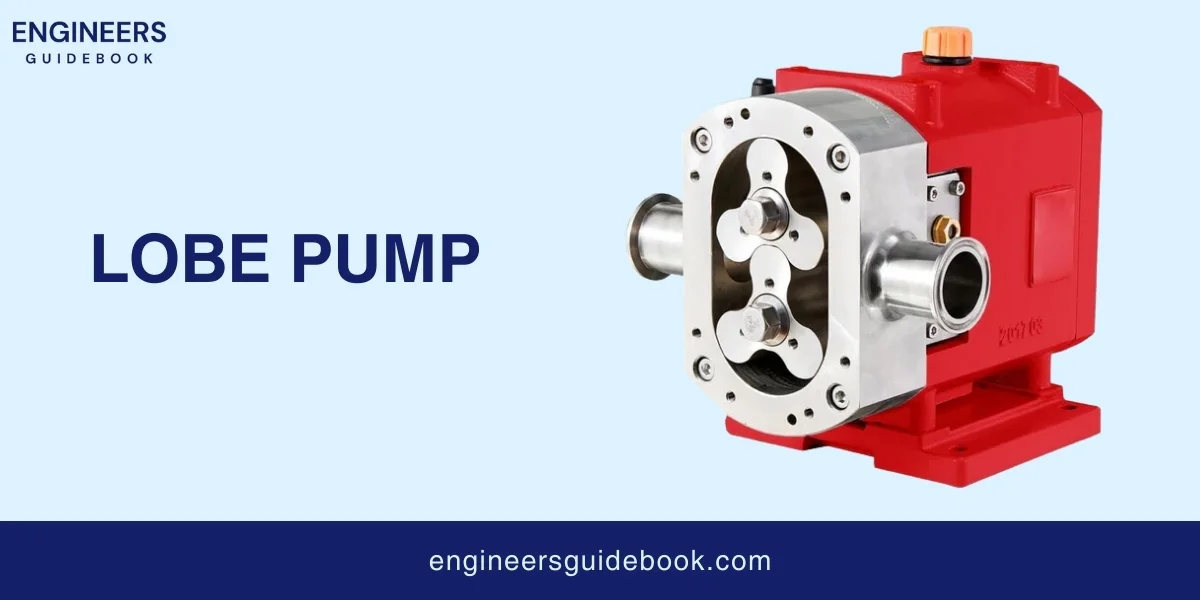
Handle viscous fluids : Lobe pumps can handle thick and viscous fluids.
Handle Solids: They are good for moving fluids with solid particles.
Smooth Flow: Lobe pumps create a smooth flow of fluid. Which is pulsation free.
Easy to Clean: They are easy to clean and maintain.
High Cost: Lobe pumps are very expensive as compare to other pump types.
Lower Efficiency: Due to speed limitations, they might not be as efficient as other pump types.
Size: Lobe pumps are usually larger than other types of pumps.
Limited Pressure: They cannot create as high pressure as some other pumps.
Food Industry: Lobe pumps are often used to pump things like sauces, chocolates and dairy products.
Chemical Industry: lobe pumps can move a wide range of chemicals safely and efficiently.
Pharmaceutical Industry: Lobe pumps are used in the pharmaceutical industry they are used to transport syrups.
Water Treatment: Lobe pumps help in moving sludge and other thick materials in wastewater plants.
Read More: How Do Peristaltic Pumps Work? Advantages and Applications
Peristaltic pumps are devices that use a series of rollers or chambers to move fluids through a tube. They work by creating a wave-like motion that pushes the fluid forward, similar to how the muscles in your digestive system move food through your body.
Compression: The pump squeezes a section of the tube. This action traps some fluid in the tube.
Movement: The pump continues to squeeze the tube in a wave-like motion. This motion pushes the trapped fluid forward.
Release: The pump releases the tube after the fluid moves forward. The tube returns to its normal shape and new fluid enters the tube.
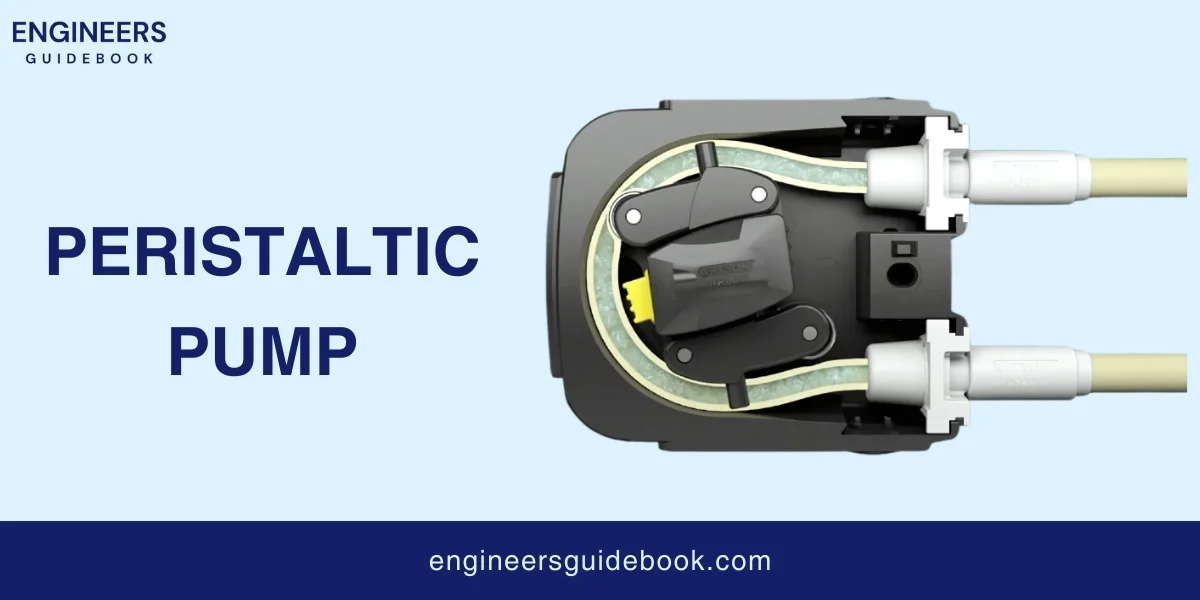
No Contamination Peristaltic pumps do not allow the fluid to touch any part of the pump. This prevents contamination.
Self-Priming These pumps can start moving fluid without needing to be filled with fluid first.
Can Handle Various Fluids Peristaltic pumps can move fluids that are thick, contain particles, or are sensitive.
Easy Maintenance The tubes in these pumps are easy to replace, making maintenance simple.
Limited Pressure: Peristaltic pumps cannot handle very high pressure. They are not suitable for high-pressure tasks.
Wear and Tear: The tubes in these pumps wear out over time and need regular replacement.
Lower Flow Rates: These pumps usually have lower flow rates compared to other types of pumps.
Energy Consumption: Peristaltic pumps may use more energy than other pumps for the same amount of fluid moved.
Medical Devices Peristaltic pumps are used in medical devices like dialysis machines to move blood and other fluids.
Food and Beverage Industry These pumps move food products and drinks without contamination, keeping them safe to consume.
Chemical Industry Peristaltic pumps handle chemicals safely, preventing leaks and spills.
Water Treatment These pumps add chemicals to water to make it clean and safe for drinking.
A diaphragm pump is a type of pump that moves fluids using a flexible diaphragm. The diaphragm is like a flat, rubbery disk that moves back and forth to push the fluid. Diaphragm pumps are used in many industries because they can handle different types of fluids and are very reliable.
Diaphragm Moves Back: The diaphragm moves back, creating a space inside the pump. This space causes the fluid to get sucked into the pump through a valve.
Diaphragm Moves Forward: The diaphragm then moves forward, squeezing the fluid and pushing it out of the pump through another valve.
Cycle Repeats: The diaphragm’s back-and-forth movement keeps the fluid moving through the pump.

Handles Different Fluids: Diaphragm pumps can move thick, thin, or gritty fluids without getting damaged.
No Leaks: The design of diaphragm pumps prevents fluids from leaking out.
Self-Priming: Diaphragm pumps can start pumping fluid without needing to be filled with fluid first.
Works Dry: Diaphragm pumps can run without fluid for a short time without getting damaged.
Limited Pressure: Diaphragm pumps cannot handle very high pressure, so they are not used for high-pressure tasks.
Noise: These pumps can be noisy when they are operating.
Wear and Tear: The diaphragm and valves can wear out over time and need to be replaced.
Flow Rate: The flow rate of diaphragm pumps is lower compared to some other types of pumps.
Chemical Industry: Diaphragm pumps move chemicals safely without leaking, which protects the environment and workers.
Food and Beverage Industry: Diaphragm pumps move ingredients and products in food and beverage processing without contaminating them.
Homes: People use diaphragm pumps in homes. They use them to move water.
Medical Devices: Diaphragm pumps are used in medical equipment to move fluids, like in some types of blood pumps.
Read More: Screw Pumps: Types, Advantages, Disadvantages, Applications
A screw pump is a type of pump that moves fluids using one or more screws. These screws rotate inside a cylinder to push the fluid along. As the screws rotate, they create cavities that transport the fluid smoothly and continuously from the intake to the outlet.
Fluid Enters: Fluid enters the pump through an opening at one end of the screw.
Screws Rotate: The screws inside the pump rotate. This rotation creates spaces between the screws that trap the fluid.
Fluid Moves: As the screws continue to turn, they push the trapped fluid forward through the pump.
Fluid Exits: The fluid exits the pump through an opening at the other end.

Handles Thick Fluids: Screw pumps can move very thick or sticky fluids that other pumps might struggle with.
Steady Flow: The rotation of the screws creates a smooth and steady flow of fluid without pulsing.
Low Noise: Screw pumps operate quietly, which can be important in some settings.
Durable: Screw pumps are strong and can handle tough conditions without breaking easily.
Complex Design: Screw pumps have a more complex design, which can make them harder to maintain and repair.
High Cost: These pumps are more expensive to buy and maintain than some other types of pumps.
Energy Use: Screw pumps uses more energy to move fluids compared to simpler pump designs.
Wear and Tear: The screws can wear down over time, especially when moving very abrasive fluids.
Oil Industry: Screw pumps are used to move oil and other thick fluids in refineries and drilling operations.
Food Industry: These pumps move thick food products, like peanut butter or syrup, without damaging them.
Paper Industry: These pumps are mostly used in paper industry to transport pulp and viscous chemicals.
A vane pump is a type of pump that uses flat, sliding pieces called vanes to move fluids. The vanes rotate inside a cylinder and push the fluid through the pump.
Fluid Enters: Fluid enters the pump through an inlet port.
Vanned Rotor Rotates: A rotor with sliding vanes inside the pump starts to rotate.
Vanned Rotor Pushes Fluid: The vanes slide out from the rotor and touch the walls of the pump. As the rotor turns, the vanes trap and push the fluid forward.
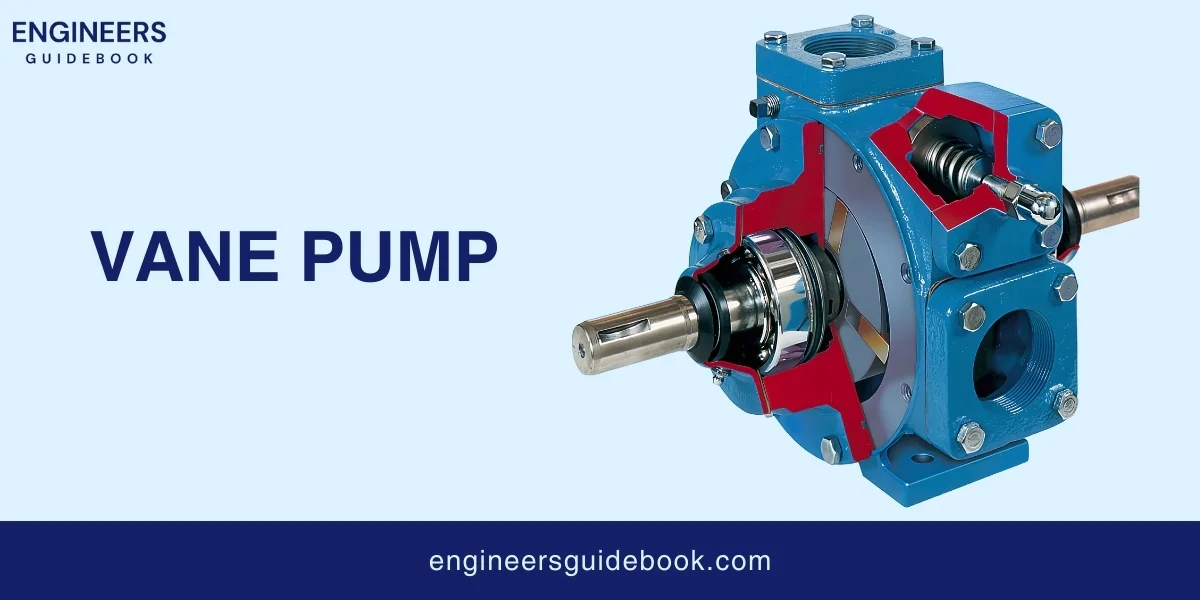
Consistent Flow: Vane pumps provide a steady and smooth flow of fluid, without pulsing.
Self-Priming: Vane pumps can start moving fluid without needing to be filled with fluid first.
Handles Thin Fluids: These pumps work well with thin fluids like water or fuel.
Compact Size: Vane pumps are usually small, which makes them easy to fit into tight spaces.
Limited to Clean Fluids: Vane pumps cannot handle fluids with large particles or debris because it can damage the vanes.
Wear and Tear: The vanes can wear out over time and need regular replacement to keep the pump working well.
Pressure Limits: Vane pumps are not suitable for very high-pressure applications.
Sensitive to Viscosity These pumps work best with fluids of a certain thickness. Fluids that are too thick or too thin can cause problems.
Fuel Transfer: Vane pumps are used to move gasoline and diesel fuel from one place to another.
Hydraulic Systems: These pumps are used in machines that need hydraulic fluid to operate, like car brakes and elevators.
Refrigeration Systems: Vane pumps move refrigerants in air conditioners and refrigerators to keep them cool.
Printing Industry: These pumps move ink in printing presses to ensure smooth and consistent printing.
Read More: Centrifugal Pumps | Working, Formulas & Applications |
Centrifugal Pumps operate based on the principle of centrifugal force. They consist of a rotating impeller that spins rapidly within a casing.
As the impeller rotates, it creates a centrifugal force that pushes fluid away from the center of rotation and towards the outer edges of the casing. This action increases the fluid’s velocity and pressure, causing it to be expelled through a discharge outlet.
Fluid Enters: Fluid enters the pump through an inlet called the suction side.
Impeller Spins: The impeller inside the pump starts to spin very fast.
Fluid Moves Outwards: The spinning impeller pushes the fluid outwards to the edges of the pump.
Fluid Exits: The fluid exits the pump through an outlet called the discharge side.

High Flow Rate: Centrifugal pumps can move a large amount of fluid quickly, making them efficient for many tasks.
Simple Design: These pumps have a straightforward design, which makes them easy to use and maintain.
Low Cost: Centrifugal pumps are usually less expensive than other types of pumps.
Versatile: These pumps can handle different types of fluids, from water to chemicals.
Not Self-Priming: Centrifugal pumps need to be filled with fluid before they can start working. They cannot pump air.
Pressure Limits: These pumps cannot handle very high-pressure applications well.
Wear and Tear: The impeller and other parts can wear out over time, especially if the fluid has particles.
Efficiency Drops with Viscous Fluids: Centrifugal pumps are less efficient with thick or sticky fluids.
Water Supply: Centrifugal pumps move water in homes, buildings, and cities to provide a steady water supply.
Irrigation Systems: These pumps help move water to fields and gardens for growing crops.
Firefighting: Centrifugal pumps are used in fire trucks to pump water quickly and forcefully to put out fires.
Chemical Industry These pumps move chemicals in factories and plants, helping to process materials safely.
An axial flow pump is a type of centrifugal pump that uses the rotation of its impeller to generate a pressure difference between the pump’s inlet and outlet.
This pressure difference creates a flow of fluid through the pump, allowing it to move liquids from one location to another.
An axial flow pump is a type of pump that moves fluid along the same direction as the pump’s shaft like a propeller pushing a boat forward.
Fluid Inlet: The fluid enters the pump through the inlet, which is usually located at the center of the pump.
Impeller Rotation: The impeller, which is the rotating part of the pump, rotates at a high speed. This rotation creates a pressure difference between the inlet and outlet of the pump.
Fluid Flow: The pressure difference created by the impeller rotation causes the fluid to flow through the pump. The fluid flows from the inlet to the outlet, creating a flow of liquid.
Outlet: The fluid exits the pump through the outlet, which is usually located at the periphery of the pump.

High Flow Rate: Axial flow pumps can move a lot of fluid very quickly, making them useful for tasks needing high flow rates.
Efficient with Low Pressure: These pumps work well when you need to move fluid at a low pressure over a long distance.
Simple Design: Axial flow pumps have a straightforward design, which makes them easier to maintain.
Can Handle Large Volumes: These pumps are great for moving large volumes of fluid, such as in flood control or irrigation.
Limited to Low Pressure: Axial flow pumps cannot handle high-pressure applications, so they are not suitable for all tasks.
Wear and Tear: The propeller and other parts can wear out over time, especially if the fluid has particles.
Not Self-Priming: These pumps need to be filled with fluid before they can start working. They cannot pump air.
Efficiency Drops with Thick Fluids: Axial flow pumps are less efficient with thick or sticky fluids.
Irrigation Systems: Axial flow pumps move water in large irrigation systems to help water crops and fields.
Flood Control: These pumps help remove large amounts of water quickly in areas prone to flooding.
Water Treatment Plants: Axial flow pumps move water through treatment processes to make it safe for drinking.
Cooling Systems: These pumps are used in power plants and factories to move large amounts of water for cooling purposes.
A mixed flow pump is a type of pump that combines features of both axial flow pumps and centrifugal pumps. It moves fluid in a direction that is both along the pump’s shaft and outwards from the shaft. Mixed flow pumps are used when you need both a high flow rate and moderate pressure.
Fluid Enters: Fluid enters the pump through an inlet.
Impeller Spins: An impeller inside the pump spins. The impeller looks like a fan and is attached to a shaft.
Fluid Moves: The spinning impeller pushes the fluid both along the direction of the shaft and outwards.
Fluid Exits: The fluid exits the pump through an outlet, moving in a mixed direction.
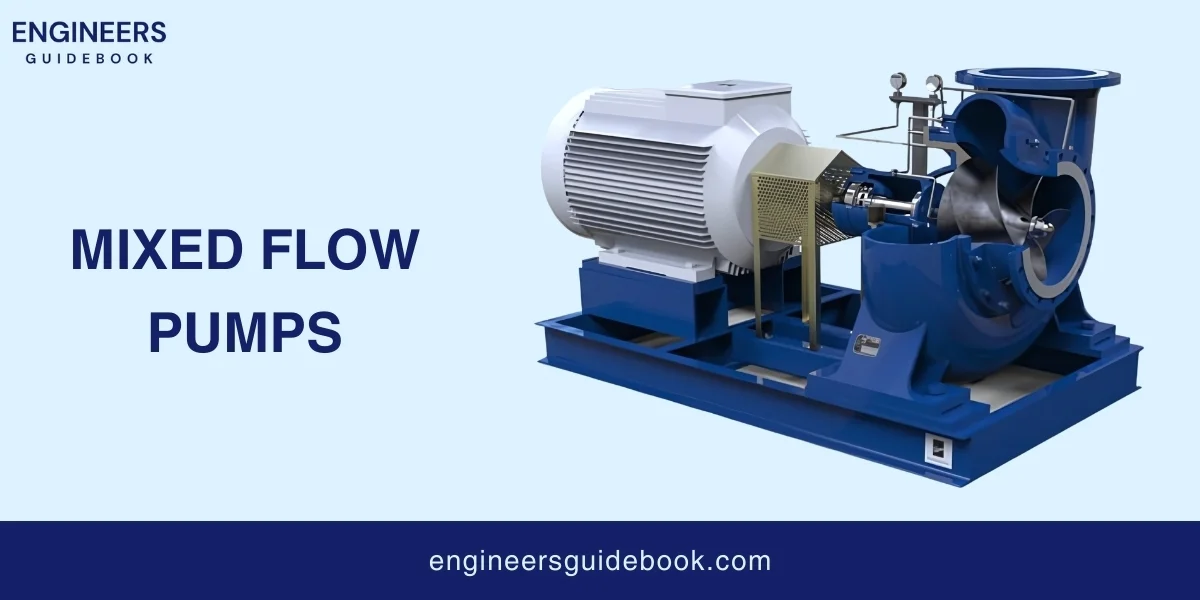
High Flow Rate and Pressure: Mixed flow pumps can handle both high flow rates and moderate pressure, making them versatile.
Efficient: These pumps are efficient and can move large volumes of fluid with less energy.
Flexibility: Mixed flow pumps can handle a wide range of fluids, including liquids and gases, and can operate in both forward and reverse directions.
Compact Design: These pumps have a compact design, which makes them easier to install in different locations.
Not for High Pressure: Mixed flow pumps are not suitable for very high-pressure applications.
Maintenance Needs: The impeller and other parts can wear out and need regular maintenance.
Sensitive to Fluid Changes: The performance of these pumps can be affected by changes in the fluid’s thickness or particle content.
Complex Design: The mixed flow design can be more complex, making repairs and troubleshooting more challenging.
Water Supply Systems: Mixed flow pumps are used to move water in municipal water supply systems to homes and businesses.
Irrigation: These pumps help water large agricultural fields efficiently, combining high flow with moderate pressure.
Flood Control: Mixed flow pumps are used to quickly remove water in flood control systems, protecting areas from flooding.
Power generation: Mixed flow pumps are used in power generation plants to pump water through turbines to generate electricity.
Submersible pumps are a type of pump that is designed to operate underwater. These pumps are designed to withstand the harsh conditions of underwater environments and provide reliable and efficient pumping services.
Placed Underwater: Place the pump in the water or fluid that needs to be moved.
Electric Motor Powers Pump: An electric motor inside the pump turns on. This motor is sealed so that water cannot damage it.
Impeller Spins: The motor spins an impeller, which is a fan-like part inside the pump.
Fluid Moves Up: The spinning impeller pushes the fluid through a pipe or hose to the surface or another location.
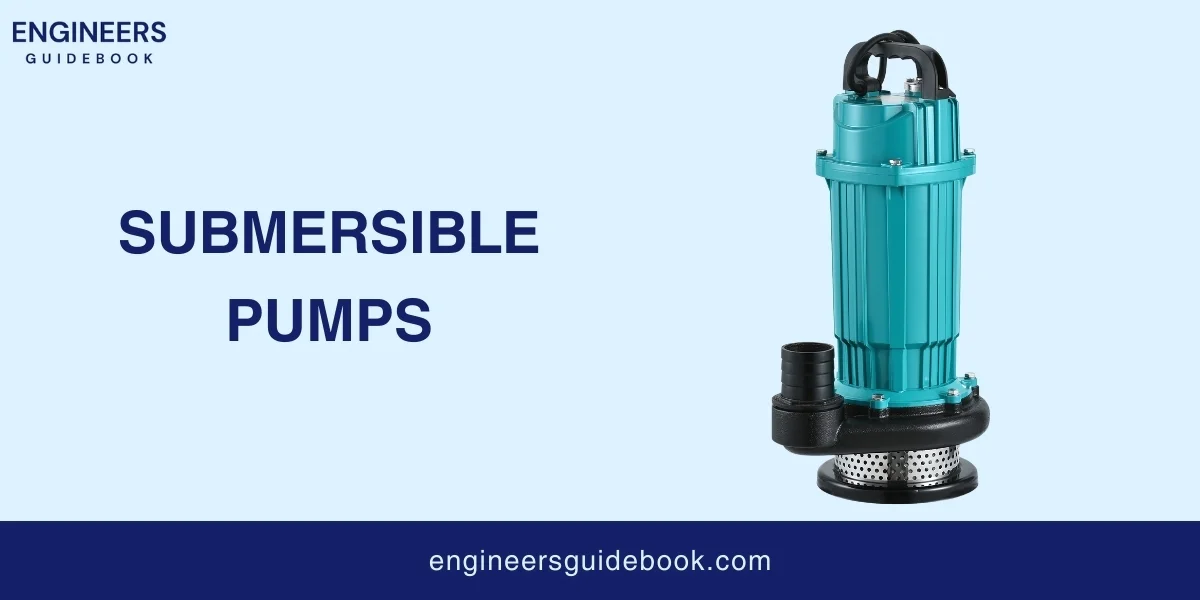
No Priming Needed: Submersible pumps do not need to be filled with water before they start working. They are already underwater.
Quiet Operation: These pumps are very quiet because the water around them helps to muffle the noise.
Efficient: Submersible pumps are efficient because they push water directly to the surface, without fighting gravity.
Avoids Overheating: The water around the pump keeps it cool, preventing it from overheating during use.
Difficult to Access: Since submersible pumps work underwater, they can be hard to reach for maintenance or repairs.
Potential Leaks: If the seals on the pump fail, water can get inside and damage the electric motor.
Limited to Clean Water: Submersible pumps work best with clean water. Dirt or debris can clog or damage the pump.
Higher Initial Cost: These pumps can be more expensive to buy compared to other types of pumps.
Well Water Pumping: Submersible pumps are used to pump water from wells to provide drinking water for homes and farms.
Flood Control: These pumps help remove floodwater from basements, buildings, and other areas.
Irrigation: Farmers use submersible pumps to move water from rivers, lakes, or wells to their fields.
Aquariums and Ponds: Submersible pumps keep water moving in aquariums and ponds, which helps keep the water clean and healthy for fish.
A jet pump is a type of pump that uses high-speed water jets to move water from one place to another. They are commonly used in various industrial applications, including oil and gas production, water treatment, and wastewater management. Jet pumps are designed to operate efficiently and reliably, making them a popular choice for many industries.
Water Enters Pump: Water enters the pump through an inlet.
Jet Creates High-Speed Flow: A nozzle inside the pump creates a high-speed jet of water.
Creates Vacuum: The high-speed jet creates a vacuum, which pulls more water into the pump.
Water Moves Out: The combined flow of the jet and the pulled water moves out through an outlet, pushing the water to where it is needed.

Deep Well Pumping: Jet pumps can lift water from deep wells, making them useful for accessing underground water sources.
Self-Priming: These pumps can start working without needing to be filled with water first.
Durable: Jet pumps are strong and can last a long time with proper maintenance.
Handles Various Fluids:
Jet pumps can move different types of fluids, including water mixed with air or other substances.
Lower Efficiency: Jet pumps are less efficient compared to some other types of pumps, meaning they can use more energy to move the same amount of water.
Noisy Operation: These pumps can be noisy when they are working, which might be a problem in quiet settings.
Sensitive to Air Leaks: Jet pumps need to maintain a vacuum to work properly, so any air leaks can reduce their efficiency.
Complex Installation: Installing a jet pump can be more complicated than other types of pumps, requiring careful setup.
Well Water Supply: Jet pumps are used to bring water from deep wells to the surface for drinking and other uses.
Irrigation Systems: Farmers use jet pumps to move water from rivers, lakes, or underground sources to their fields.
Home Water Systems: Jet pumps help provide water to homes that do not have access to city water systems, ensuring a reliable water supply.
Industrial Processes: These pumps are used in factories and other industrial settings to move water and other fluids as part of the manufacturing process.
A magnetic drive pump is a type of pump that uses magnetic forces to transfer fluid without the need for mechanical seals. This technology has been developed to overcome the limitations of traditional pumps, which often rely on seals that can fail prematurely, causing downtime and maintenance issues.
These pumps have no direct connection between the motor and the impeller, which makes them leak-proof.
Motor Spins: The motor in the pump spins a set of outer magnets.
Magnets Move: The spinning outer magnets create a magnetic field that causes the inner magnets to spin.
Impeller Spins: The inner magnets are attached to the impeller, so when they spin, the impeller spins too.
Fluid Moves: The spinning impeller pushes the fluid through the pump, moving it from the inlet to the outlet.
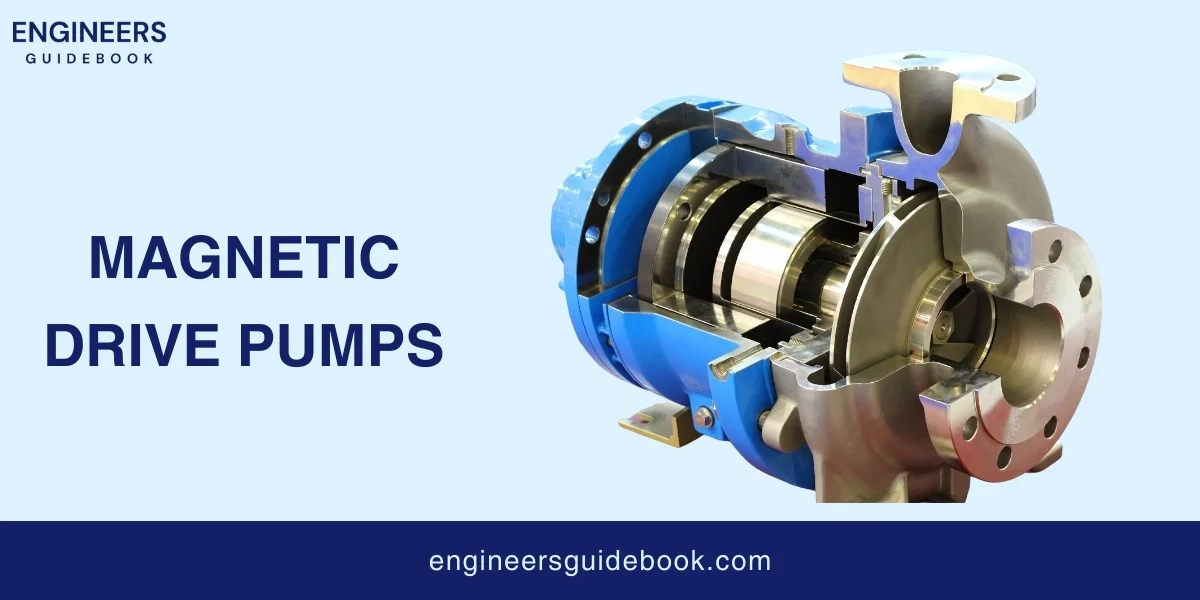
Leak-Proof: Magnetic drive pumps have no seals, which makes them completely leak-proof and safe for handling dangerous fluids.
Low Maintenance: These pumps require less maintenance because there are no seals or direct connections that can wear out.
Chemical Resistance: Magnetic drive pumps can handle corrosive and hazardous chemicals without getting damaged.
Energy Efficient: These pumps are energy efficient because they have fewer moving parts and less friction.
Cost: Magnetic drive pumps can be more expensive to buy compared to other types of pumps.
Limited to Low Viscosity Fluids: These pumps work best with fluids that are not very thick. Thick fluids can reduce the pump’s efficiency.
Temperature Sensitivity: Magnetic drive pumps may not work well at very high temperatures because the magnets can lose their strength.
Power Limitations: These pumps are not suitable for very high-power applications, as the magnetic coupling can slip under high loads.
Chemical Processing: Magnetic drive pumps move hazardous and corrosive chemicals safely in factories and laboratories.
Pharmaceutical Industry: These pumps are used to handle sensitive and sterile fluids in the production of medicines.
Food and Beverage Industry: Magnetic drive pumps move liquids in food and beverage production without contamination.
Aquariums and Fish Ponds: These pumps circulate water in aquariums and fish ponds, keeping the water clean and healthy for fish.
A booster pump is a type of pump that increases the pressure of a fluid by adding energy to it. This technology is used in various industries, including water supply, chemical processing, and power generation.
Booster pumps are designed to operate in conjunction with other pumps to enhance their performance and efficiency.
Fluid Enters: Fluid enters the booster pump through an inlet.
Pump Activates: The pump’s motor turns on and starts working.
Impeller Spins: An impeller inside the pump spins, increasing the pressure of the fluid.
Fluid Exits: The high-pressure fluid exits the pump through an outlet, providing a strong flow.
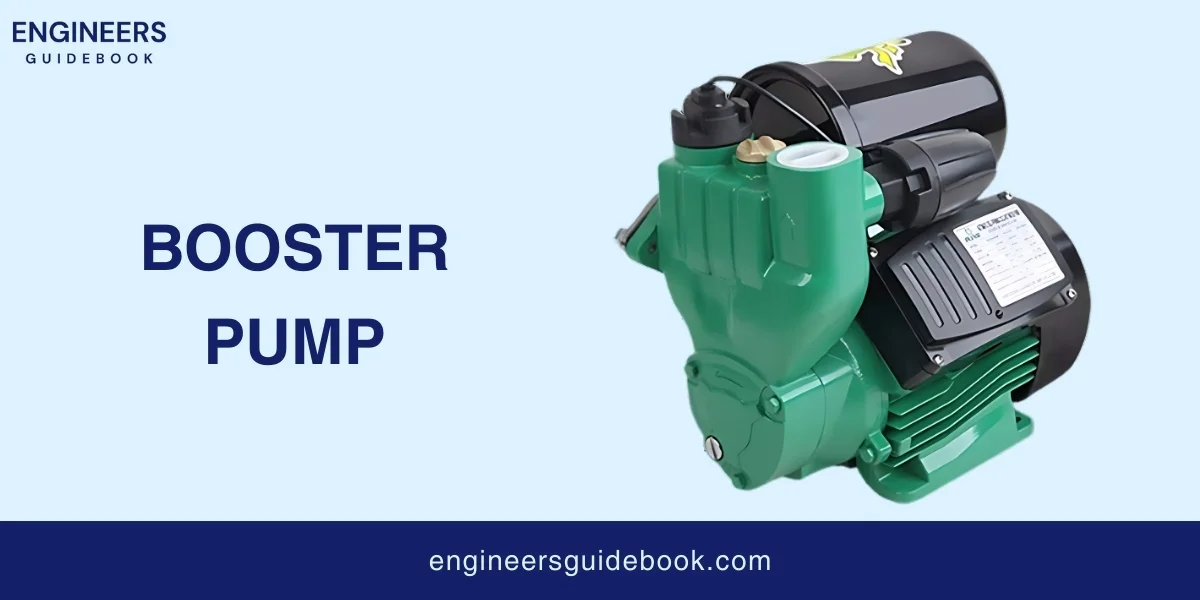
Increases Pressure: Booster pumps increase water pressure, making sure water flows strongly in homes and buildings.
Improves Flow Rate: These pumps improve the flow rate, ensuring that water reaches all parts of a system quickly.
Compact Size: Booster pumps are usually small and easy to install in various settings.
Versatile: Booster pumps can be used with different types of fluids, including water, chemicals, and more.
Energy Use: Booster pumps use electricity to operate, which can increase energy costs.
Noise: These pumps can be noisy when they are working, which might be bothersome in quiet environments.
Maintenance: Booster pumps require regular maintenance to keep them working well, including checking for leaks and wear.
Initial Cost: Buying and installing a booster pump can be expensive compared to other types of pumps.
Home Water Systems: Booster pumps are used in homes to ensure strong water pressure for showers, faucets, and appliances.
Irrigation Systems: Farmers use booster pumps to provide a steady flow of water to their crops, ensuring even watering.
Commercial Buildings: Booster pumps ensure that water pressure is strong enough to reach all floors and rooms in large buildings.
Industrial Processes: These pumps are used in factories and plants to move fluids through various processes, ensuring efficient operation.
There are mainly 2 types of pumps used in industry.
Pumps are classified into two main categories. which determines their functionality and suitability for specific applications.
1. Classification of pump Based on Mechanism
2. Classification of pump Based on Operation
A gear pump is a type of positive displacement pump that uses rotating gears to move fluid through a system. It works by trapping fluid between the gears and the pump casing, creating pressure that pushes the fluid out of the pump.
A lobe pump is a type of positive displacement pump that uses rotating lobes to move fluid through a system. It works by trapping fluid between the lobes and the pump casing, creating pressure that pushes the fluid out of the pump.
Peristaltic pumps are devices that use a series of rollers or chambers to move fluids through a tube. They work by creating a wave-like motion that pushes the fluid forward, similar to how the muscles in your digestive system move food through your body.
A diaphragm pump is a type of pump that moves fluids using a flexible diaphragm. The diaphragm is like a flat, rubbery disk that moves back and forth to push the fluid. Diaphragm pumps are used in many industries because they can handle different types of fluids and are very reliable.
A screw pump is a type of pump that moves fluids using one or more screws. These screws rotate inside a cylinder to push the fluid along. As the screws rotate, they create cavities that transport the fluid smoothly and continuously from the intake to the outlet.
Piston pumps are a type of positive displacement pump that uses a piston to move and compress fluid in a chamber. This mechanism allows for precise control and the ability to generate high pressures, making piston pumps ideal for a variety of industrial applications.
Pumps are classified into two main categories. which determines their functionality and suitability for specific applications?
A vane pump is a type of pump that uses flat, sliding pieces called vanes to move fluids. The vanes rotate inside a cylinder and push the fluid through the pump.
Centrifugal Pumps operate based on the principle of centrifugal force. They consist of a rotating impeller that spins rapidly within a casing.
As the impeller rotates, it creates a centrifugal force that pushes fluid away from the center of rotation and towards the outer edges of the casing. This action increases the fluid’s velocity and pressure, causing it to be expelled through a discharge outlet.
A mixed flow pump is a type of pump that combines features of both axial flow pumps and centrifugal pumps. It moves fluid in a direction that is both along the pump’s shaft and outwards from the shaft. Mixed flow pumps are used when you need both a high flow rate and moderate pressure.
Submersible pumps are a type of pump that is designed to operate underwater. These pumps are designed to withstand the harsh conditions of underwater environments and provide reliable and efficient pumping services.
A jet pump is a type of pump that uses high-speed water jets to move water from one place to another. They are commonly used in various industrial applications, including oil and gas production, water treatment, and wastewater management. Jet pumps are designed to operate efficiently and reliably, making them a popular choice for many industries.
A magnetic drive pump is a type of pump that uses magnetic forces to transfer fluid without the need for mechanical seals. This technology has been developed to overcome the limitations of traditional pumps, which often rely on seals that can fail prematurely, causing downtime and maintenance issues.
These pumps have no direct connection between the motor and the impeller, which makes them leak-proof.

Bilal Arshad, with a PhD in Mechanical Engineering from Caltech, specializes in robotics and automation. His cutting-edge research in autonomous systems is revolutionizing industrial manufacturing processes.
Explore the Engineer’s Guidebook! Find the latest engineering tips, industry insights, and creative projects. Get inspired and fuel your passion for engineering.
© 2023-2024 Engineer’s Guidebook. All rights reserved. Explore, Innovate, Engineer.